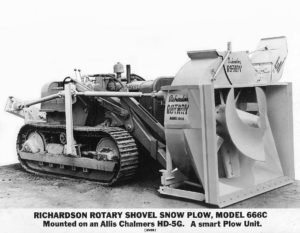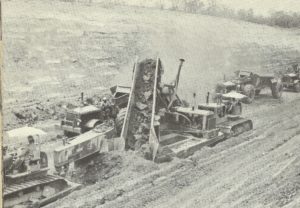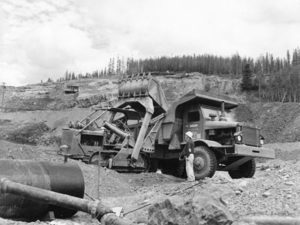Backhoe history

The history of heavy excavating machines started in 1835 when the dipper power shovel was devised to load trucks and to excavate stone and tough soil. The dipper scoop was steam-powered and mounted on trains like a train. Rail lines were laid into big excavations and mines so the dipper power shovel could move around and load stuff into railroad cars or horse-drawn trucks. The dipper scoop was altered in a variety of methods to produce the familiar building gear of now; the boom was altered, distinct accessories were added, the weight and balance of the gear were altered, as well as the kind of tires or tracks were selected to match the equipment’s main jobs. Obviously, together with the creation of gas-and diesel-powered vehicles, building equipment became more adaptable. Diesel engines power most building gear, although electric-power battery power, and propane tanks are used on specialized gear.
The backhoe is among the more versatile and smaller descendants of the dipper scoop. The backhoe became an important piece of gear together with the large scale building of highways and increased belowground
 A backhoe with highlights of its own equipment- pail and driven track.
A backhoe with highlights of its own equipment- pail and driven track.
The positioning of utilities. Trenchers and backhoes are used to excavate trenches for utilities and drainage. But, until the late 1950s from the early 1900s, the backhoe stayed a big piece of gear, and agricultural tractors were frequently called into service for smaller, small accessibility building jobs. Then it was less complicated to be a backhoe operator. Kits were accessible to accommodate the tractors to building jobs, but accessory points or occasionally the right connections weren’t supplied, as well as the forms of building were dangerous for the layout as well as the operator of the tractor.
In backhoe layout, a boom in residential development started another spurt of developments in the late 1950s. By 1957, an engineer who’d retired from the Case Corporation, Elton Long, reinvented the backhoe in the type of the loader/backhoe that let the agricultural tractor and united two pieces of gear in one to return to farming. The loader/backhoe of long had the right swing mechanism as well as rubber tires for freedom and pails for specialized work.
By 1995, Case added its product line and its L Series loader/backhoes. They range in power from 73 to 99 hp (54 to 74 kW), as well as their loaders can lift from about 5,300-7,300 pounds (2,400-3,300 kg). The backhoe on the biggest L Series machine can excavate to a depth of nearly 16 feet (5 m), as well as the Extendahoe (an adapter that raises the span of the stick) raises that to about 20 feet (6 m).
Raw Materials
Backhoe producers buy a lot of its own components as subassemblies, or partly assembled components that are smaller, the producer subsequently finishes. Several independent companies that specialize in metal fabrication, hydraulics, or alternative specializations may does the manufacture of subassemblies. The hydraulic system is provided as a bundle including hydraulic cylinders, valves, and the pump. The operator’s station might be an enclosed cab or an open, canopy kind; external providers may likewise provide these.
Plastics consist of the trimming in the inside and across the outside of the cab, as well as a temperature-resistant plastic that is composite is used for the air cleaner housing. Seals are created of a high-grade elastomeric plastic that could resist pressures and high temperatures. A lower level of plastic is formed into the cab trimming as well as the fender.

Design
By late in the twentieth century, so the fundamental layout, and the function, of the backhoe were certainly identified by the construction industry which uses it. Layout developments continue to be made, however, they’re in operation characteristics and attributes, rather than revolutionary design changes. The merchandise is defined by the organization predicated on a summary of characteristics, and the consumers rank in value and in real performance or deliver these characteristics. Case regularly studies its customers worldwide to get information over the most comprehensive variety of working states; it expects to learn the layout theories behind its backhoe surpass their clients’ expectations.
Three or four images of the brand new layout are constructed, and customers are encouraged to go to the manufacturing plant for “customer practices,” during which the model are analyzed and analyzed. Building operations are modeled over two or three days, as well as the customers assess the operation of the brand new attributes as well as the models. As an example, the operator’s relaxation could be assessed in a number of as many as 50 queries as well as a form of a contest between the model as well as the earlier layout. With this in-depth input signal, the producer subsequently performs its own durability, dependability, and other evaluations and assesses the manufacturability and cost of the redesigned product. Additional internal quality assessments are done before the item is in fact found in the market.
